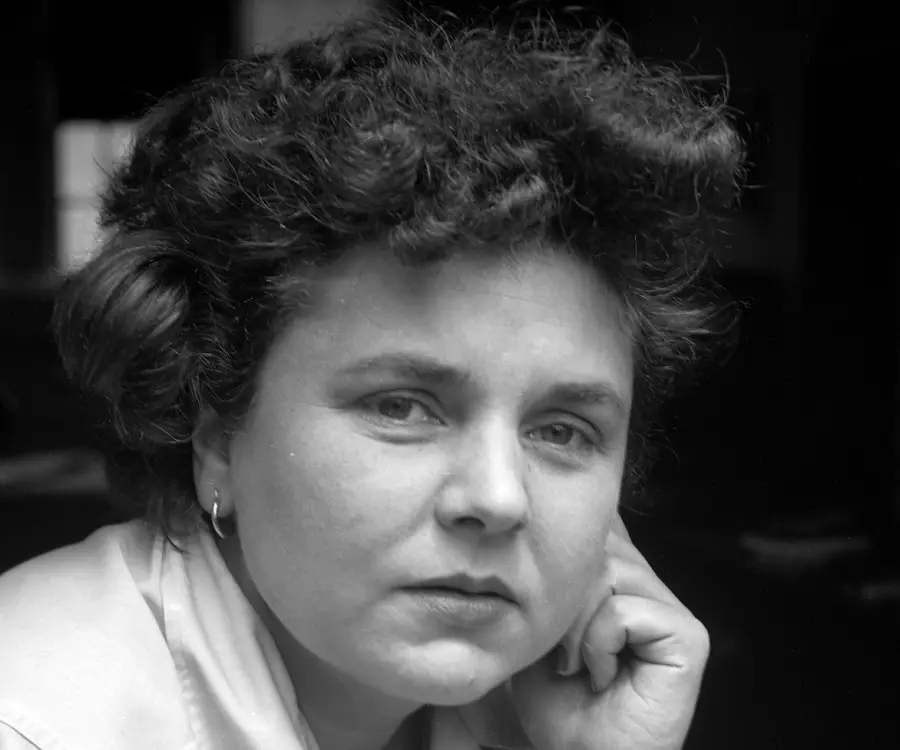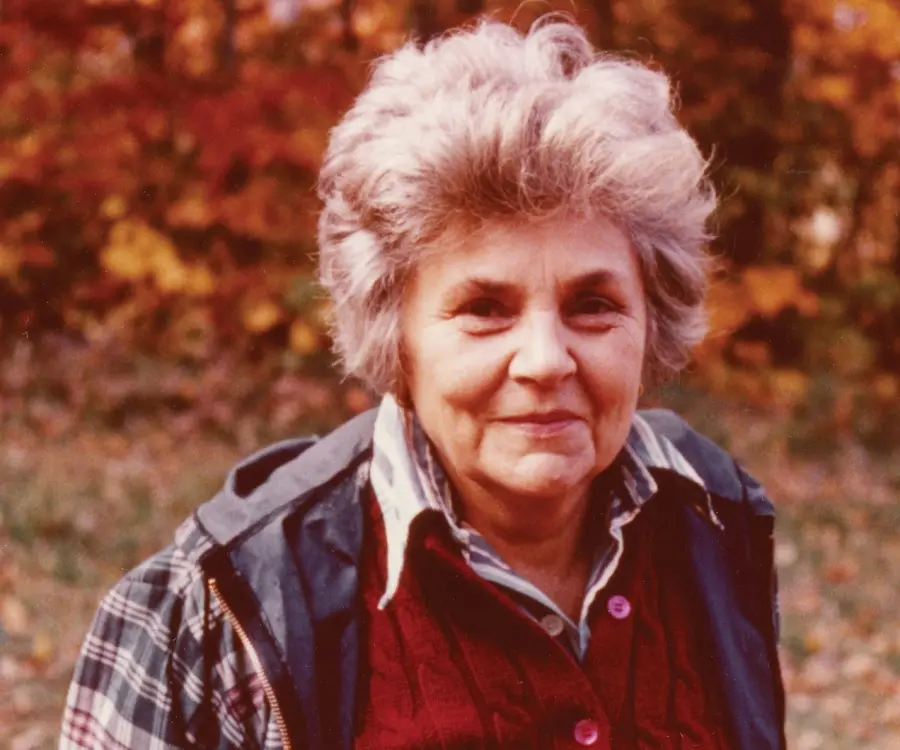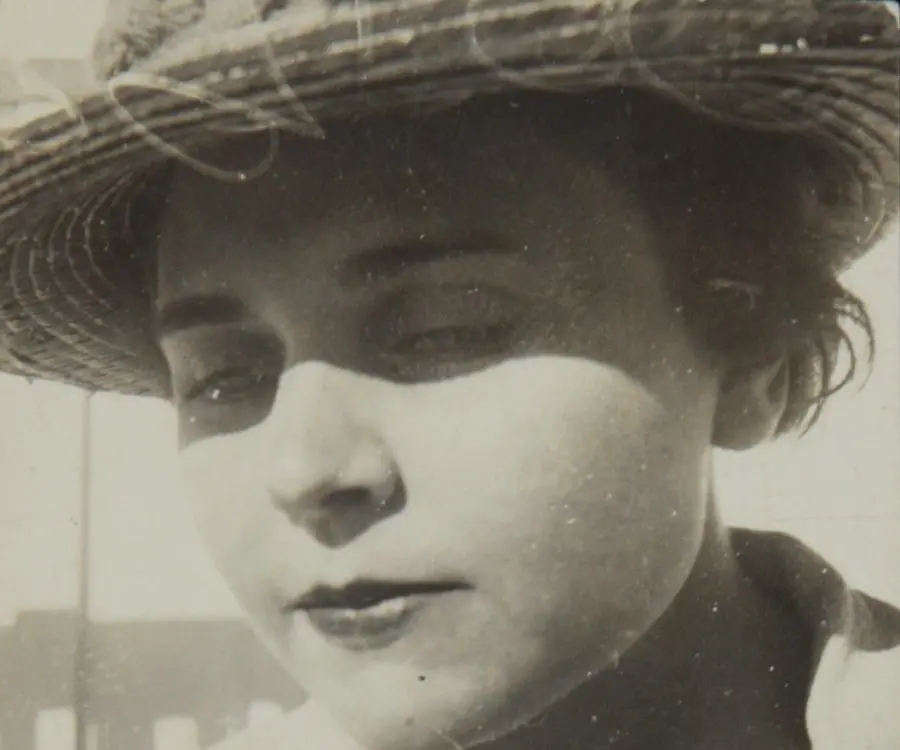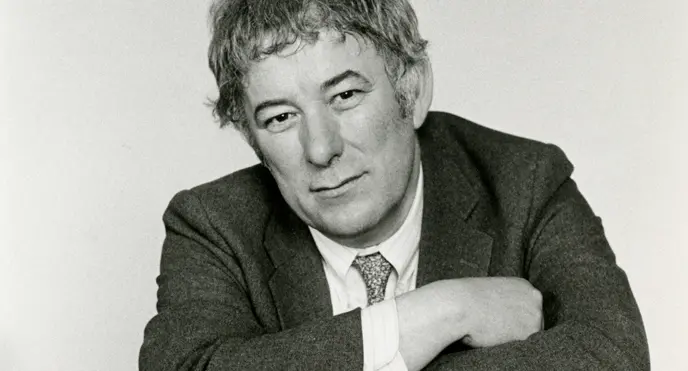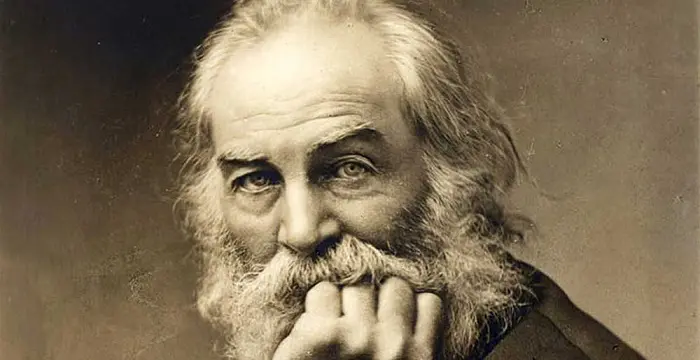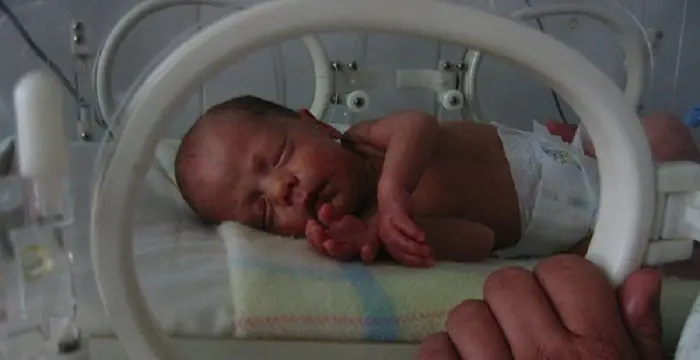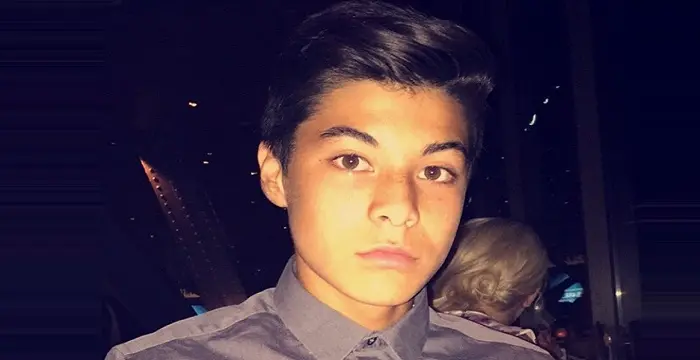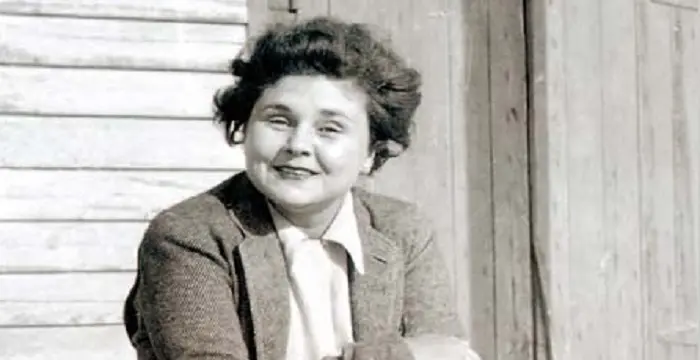
Elizabeth Bishop - Writers, Career and Childhood
Elizabeth Bishop's Personal Details
Elizabeth Bishop was an American poet and short story writer known for her vividly descriptive body of works
| Information | Detail |
|---|---|
| Birthday | February 8, 1911 |
| Died on | October 6, 1979 |
| Nationality | American |
| Famous | Writers, Poets |
| City/State | Massachusetts |
| Universities |
|
| Birth Place | Boston, Massachusetts, United States |
| Gender | Female |
| Sun Sign | Aquarius |
| Born in | Boston, Massachusetts, United States |
| Famous as | Poet |
| Died at Age | 68 |
// Famous Writers
Joyce Meyer
Joyce Meyer is a Christian author and speaker. This biography provides detailed information about her childhood, life, achievements, works & timeline
Temple Grandin
Temple Grandin is a well-known American writer, autistic activist and animal expert. This biography profiles her childhood, life, achievements, career and timeline
Tennessee Williams
Tennessee Williams was one of the greatest playwrights of the 20th century. This biography of Tennessee Williams provides detailed information about his childhood, life, achievements, works and timeline.
Elizabeth Bishop's photo
Who is Elizabeth Bishop?
Elizabeth Bishop was an American poet and short story writer known for her vividly descriptive body of works, which were often very witty. A much acclaimed poet, she had once served as the Consultant in Poetry to the Library of Congress. Though her writing is known for its wittiness and humor, the poet herself had a very difficult beginning in life. She was effectively orphaned at the age of five, when her widowed mother had to be institutionalized for mental instability. Thereafter, she was raised first by her maternal grandparents in Nova Scotia, then by her paternal grandparents in Worcester, and finally by an aunt in Cliftondale. Physically, she was not very strong and suffered from asthma from her early childhood and therefore had little formal education until her freshman year. In spite of these, she watched her surroundings carefully and kept them in her memory. She was not a prolific writer, having produced only five slim volumes of works in thirty-five years; yet she had earned a large number of awards including the prestigious Pulitzer Prize. In addition to her poems and short stories, she is also known for her travel book called ‘Brazil’ and translation works such as ‘The Diary of Helena Morley’ and ‘An Anthology of Twentieth-Century Brazilian Poetry’.
// Famous Poets
Charles Bukowski
Charles Bukowski was a German-born American novelist, short story writer and poet. With this biography, learn in details about his childhood, life, works, career and timeline
Seamus Heaney
Nobel Laureate Seamus Heaney was an Irish poet, playwright and translator. Know about his profile, childhood, life and timeline in the biography below.
Walt Whitman
Walt Whitman was an American poet, journalist and humanist. Read this brief biography to find more on his life & timeline.
Childhood & Early Years
Elizabeth Bishop was born on February 8, 1911, in Worcester, Massachusetts. Her father, William Thomas Bishop, a successful builder, was the scion of a well-to-do Massachusetts family. On the contrary, her mother, Gertrude May nee Bulmer came from Nova Scotia and was of a more humble lineage.
Elizabeth, her parents’ only child, must have experienced great love and warmth for the first eight months of her life. That her parents loved each other and also their tiny daughter is evident from a letter written by Thomas Bishop to Gertrude’s mother Elizabeth Hutchinson Bulmer, soon after his daughter’s birth.
In this letter, dated 12 February 1911, Thomas was found to be bubbling with happiness. But it did not last long. On October 8, 1911, he died of Bright's disease, leaving his wife devastated. She could never get over the shock and suffered a series of nervous breakdowns.
In 1915, after Gertrude had been hospitalized for a couple of times in the USA, the mother and daughter moved to Great Village, Nova Scotia, to live with Gertrude’s parents. Here too, she suffered a series of breakdowns.
Finally on June 20, 1916, Gertrude was admitted to a sanatorium across Halifax and remained there until her death on May 29, 1934. Elizabeth continued to live with her maternal grandparents in Great Village; she never saw her mother again.
However, she carried with her tender memories of her mother, who always wore black dresses since her husband’s death. Once the two of them went for a ride in a swan boat in the Boston Public Garden and a live swan bit her mother’s hand. She later remembered “the hole in the black glove and a drop of blood on it."
Elizabeth was quite happy with her maternal grandparents in Nova Scotia, going to the village school and leading a more or less carefree life. But in October 1917, her paternal grandparents, the Bishops, worried about her unsophisticated and backward upbringing, gained her custody and brought her back to Worcester.
Till then the Bishops were just names and it almost seemed like a ‘kidnapping’ to six-year-old Elizabeth. Within a few months, she became desperately ill and realizing that she was not happy with them, the Bishops sent her to live with Gertrude’s older sister, Maude Boomer Shepherdson and her husband, George.
Thus from May 1918, Elizabeth began a new life with the Shepherdsons. Initially they lived in a tenement in Revere, an impoverished Massachusetts neighborhood; but later they moved to Cliftondale, which offered a better environment. The Bishops paid for her upkeep and education.
From childhood, Elizabeth suffered from asthma and therefore had very little formal education until she was enrolled at Saugus High School in her freshman year. Later in her sophomore year, she studied at North Shore Country Day School, located in Swampscott.
Thereafter in 1928, she moved to Walnut Hill School for the Arts, an exclusive boarding school, located in Natick, graduating from there in 1930. Here she studied music and also wrote poems, which were published in the school magazine.
Next in 1930, Elizabeth Bishop entered Vassar College, New York. Her initial ambition was to become a composer; later she gave it up to study English. Here she was introduced to poet Marianne Craig Moore, who became her lifelong friend and mentor.
In 1933, she co-founded a short-lived but influential literary journal called 'Con Spirito’ with Mary McCarthy, Eleanor Clark, and Margaret Miller. It was to be an alternative to the well-established ‘Vassar Review.’
In 1934, she graduated from Vassar and then for a short period enrolled at Cornell medical School. Maybe it was her mother’s death earlier in the same year, which induced in her an interest in medicine. However, Moore soon persuaded her to leave medicine and concentrate on writing.
Traveling Around
By now, Elizabeth Bishop had inherited her father’s estate. Although it was nothing huge, it made sure that she could live without earning for the time being. Therefore in 1935, she set out for Paris, where she lived for four year with Louise Crane, a friend from Vassar.
In between, she traveled extensively, visiting other parts of France as well as Spain, North Africa, Ireland, and Italy. What she saw in those places, she documented in her poetries, many of which remained unpublished.
In 1937, Bishop and Crain returned to the USA. In the following year, they bought a house in Key West, Florida. Here she lived until 1944, making trips to the north intermittently.
On one such occasion in the fall of 1940, she stopped at Brevard, a rustic mountain town in North Carolina to meet her friends Charlotte and Red Russell. She liked it so much that she spent two months at the place before starting on her way to New York, where she put up at a hotel in Murray Hill.
Living all alone by herself, she began drinking heavily. Her aunt’s death and quarrel with her friend and mentor Moore might have induced it. Therefore, she was very happy when it was time to go back to Key West. However, she wrote very little poetry during this period, but concentrated on short stories.
This was also the time she met Marjorie Carr Stevens and subsequently moved in with her in order o save money for her travels. However, she did not have any plans yet. She watched with unease as the town prepared for the Second World War.
Then in the fall of 1941, she and Marjorie traveled to Brevard, staying there for one month before moving to New York. Later in April 1942, they traveled to Mexico, ostensibly to learn Spanish. Traveling across the country they met many people and returned to New York on September 30.
There she stayed for a few months before moving back to Key West. The period was quite productive for Bishop on the literary front and the poems she wrote during this period were later published in her first collection of verse, ‘North & South’ (1946).
Bishop remained at Key West till May 1944, feeling lonely as Marjorie went out to work. She herself took up a job, but left it within five days. Soon she became convinced that it was time to move to New York and do something with her life.
Birth of a Poet
Thereafter in May 1944, she returned to New York, where she tried to stay away from alcohol, lose weight and remain cheerful. On January 15, 1945, at the insistence of her mentor and friend Moore, she submitted the manuscript of ‘North & South’ for a poetry prize fellowship, organized by Houghton Mifflin.
It led to publication of her first book, ‘North & South’ in August 1946. In June, before the book was actually published, she left for Keene in New Hampshire and from there went to Halifax, Nova Scotia.
Across the bay from Halifax, she could see the hospital, where her mother lived and died. Feeling miserable, she left for Great Village and other places before returning to New York.
Some time thereafter, Bishop met Robert Lowell, with whom she would eventually develop a close friendship. Although she had her inheritance to look after her daily needs it was not really very big. It was Lowell, who opened her eyes to the practical aspects like fellowships and awards.
In the meanwhile, her book earned good reviews. Many of her poems were also published in different well-known journals. By the fall of 1946, Bishop became well-known as a poet. Soon her financial worries too began to ease.
In December 1946, she applied for Guggenheim Fellowship, receiving a grant of $2,500 in April 1947. It was also the year when she received the first royalty payment of $174 and 50 cents from her publisher.
In the same year, she signed the first-read contract with New Yorker and from then onwards, all her poems were first published in the journal at a higher rate than usual. Soon, she started planning her next book.
However, she was a slow writer and it would be some time before her next poetry book would be published. Meanwhile, from 1949 to 1950, she served as a consultant in Poetry for the Library of Congress.
In Brazil
In 1950, Bishop received a $2,500 traveling fellowship from Bryn Mawr College. With it, she planned to circumnavigate the continent of South America by boat. But on arriving in Santos, Brazil, in November 1951, she abandoned her initial plan and instead lived there for fifteen years.
In Brazil, she met Lota de Macedo Soares, an architect by profession. Initially she put up in her apartment in Leme, but when in 1952, Lota’s other home in Petropolis was complete, they settled down in it. All these years, Bishop kept in touch with her friends in USA through correspondence.
In 1955, while living in Brazil, she had her ‘North & South’ reprinted as ‘North & South—A Cold Spring’. The book was also published by Houghton Mifflin and it contained all the poems of ‘North & South’ plus eighteen new poems.
Her next book, ‘Questions of Travel ‘was published ten years later in 1965. The first part of the book contained poems on her life in Brazil. The second part included poems on other locations in addition to a short story titled, ’In the Village’.
Back to USA
In 1966, Elizabeth Bishop returned to the USA. Her inheritance had started fizzling out and she needed a job. Problems had also cropped up between her and Lota. She now spent two semesters at the University of Washington, Seattle, as a writer-in-residence.
Later she returned to Brazil. There she became ill and had to be hospitalized. On getting discharged she returned to the USA. Lota came to see her on 19 September 1967, possibly to mend their relationship. Unfortunately on their first night together, Lota took an overdose of tranquilizers and died a few days later.
Although it is believed that Lota had committed suicide, her family blamed Bishop for it. For a time she was traumatized by her perceived guilt. Yet, she continued to work.
In 1969, Bishop had her next book, ‘The Complete Poems’ published. In the following year, she joined the Harvard University, where she taught until 1977. Although she did not feel comfortable as a teacher, her students believed otherwise and learned a lot from her.
Some time now, she met Alice Methfessel, who became the source of her strength. Continuing to work, Elizabeth Bishop had her last collection of poems published in 1976. Titled, ‘Geography III’ it earned great reviews and also its share of awards.
Major Works
Elizabeth Bishop was a slow writer, producing around a hundred poems in thirty-five years. Among them, ‘In the Waiting Room’, written in 1976, deserves special mention. It talks about the search for the identity of a seven-year-old girl living in Worcester during the First World War.
She had also written many short stories and prose. Among them, ‘In the Village’, published in her 1965 book, ‘Questions of Travel’ is another significant work. It talks in third person about the life she led in the Great Village, Nova Scotia, and things she had experienced therein.
Awards & Achievements
Elizabeth Bishop had received a number of awards and honors throughout her life. Among them, the most significant was the prestigious Pulitzer Prize for Poetry, which she received in 1956 for ‘North & South—A Cold Spring’.
In 1970, she received the National Book Award for Poetry for her 1969 book, ‘Complete Poems’.
In 1976, she was awarded Neustadt International Prize for Literature, for her last book, ‘Geography III’.
In addition, she had received a number of fellowships such as Houghton Mifflin Poetry Prize Fellowship (1945), Guggenheim Fellowship (1947), Lucy Martin Donelly Fellowship (1951), and Academy of American Poets Fellowship (1968).
She was also a member of the National Institute of Arts and Letters, American Academy of Arts and Sciences as well as the American Academy of Arts and Letters.
Personal Life & Legacy
It is believed that Elizabeth Bishop realized her sexual orientation while studying at Vassar and subsequently developed a close relationship with Louise Crane, with whom she went on a trip to Europe. On returning to the USA, they bought a house in Key West, but the relationship did not last long.
Marjorie Carr Stevens was probably the next important woman in her life and they lived together until the middle of the 1940s. Thereafter in Brazil, she had a serious relationship with Lota (Maria Carlota) de Macedo Soares, living with her until the latter’s suicide in 1967.
In 1970, she met Alice Methfessel, who became her lover and also the source of her strength for the rest of her life. After Bishop’s death, Alice became her literary executor.
On October 6, 1979, Bishop died of a cerebral aneurysm in her apartment at Lewis Wharf, Boston. She was later buried in Hope Cemetery in Worcester, Massachusetts.
‘The Complete Poems: 1927–1979’, published posthumously in 1983, continues to carry her legacy. Some other posthumous publications are ‘Collected Prose’ (1984), 'Edgar Allan Poe & the Juke-Box: Uncollected Poems, Drafts, and Fragments by Elizabeth Bishop' (2006), and 'Poems, Prose and Letters by Elizabeth Bishop' (2008).
The Bulmer House, her childhood home in Great Village, Nava Scotia, is now known as Elizabeth Bishop House. It is now being used as an artists’ retreat.
‘Reaching for the Moon’ (Portuguese: Flores Raras), a 2013 biographical drama film directed by Bruno Barreto, is based on her life in Brazil. It dramatizes story of her love with Lota de Macedo Soares.
Trivia
Bishop was allotted the Guggenheim Fellowship a second time in 1978, but passed away before she could receive it.
// Famous Massachusetts peoples
Eugenia Cooney
Check out all that you wanted to know about Eugenia Cooney, the famous American Vlogger & YouTube Personality; her birthday, her family and personal life, her boyfriends, fun trivia facts and more.
Patrick Bouvier Kennedy
Patrick Bouvier Kennedy was the last child of American President John F. Kennedy and First Lady Jacqueline Bouvier Kennedy.
Nic Wallace
Check out all that you wanted to know about Nic Wallace, the famous American Instagram star; his birthday, his family and personal life, his girlfriends, fun trivia facts and more.
Elizabeth Bishop's awards
| Year | Name | Award |
|---|---|---|
Other | ||
| 1956 | Pulitzer Prize for Poetry | |
| 1960 | Chapelbrook Foundation Award | |
| 1970 | National Book Award for Poetry | |
| 1974 | Harriet Monroe Poetry Award | |
| 1976 | Books Abroad/Neustadt International Prize | |
| 1977 | National Book Critics Circle Award | |
| 0 | 1945 - Houghton Mifflin Poetry Prize Fellowship | |
| 0 | 1950 - American Academy of Arts and Letters Award | |
| 0 | 1953 - Shelley Memorial Award | |
Elizabeth Bishop biography timelines
- // 8th Feb 1911Elizabeth Bishop was born on February 8, 1911, in Worcester, Massachusetts. Her father, William Thomas Bishop, a successful builder, was the scion of a well-to-do Massachusetts family. On the contrary, her mother, Gertrude May nee Bulmer came from Nova Scotia and was of a more humble lineage.
- // 12th Feb 1911 To 8th Oct 1911In this letter, dated 12 February 1911, Thomas was found to be bubbling with happiness. But it did not last long. On October 8, 1911, he died of Bright's disease, leaving his wife devastated. She could never get over the shock and suffered a series of nervous breakdowns.
- // 1915In 1915, after Gertrude had been hospitalized for a couple of times in the USA, the mother and daughter moved to Great Village, Nova Scotia, to live with Gertrude’s parents. Here too, she suffered a series of breakdowns.
- // 20th Jun 1916 To 29th May 1934Finally on June 20, 1916, Gertrude was admitted to a sanatorium across Halifax and remained there until her death on May 29, 1934. Elizabeth continued to live with her maternal grandparents in Great Village; she never saw her mother again.
- // Oct 1917Elizabeth was quite happy with her maternal grandparents in Nova Scotia, going to the village school and leading a more or less carefree life. But in October 1917, her paternal grandparents, the Bishops, worried about her unsophisticated and backward upbringing, gained her custody and brought her back to Worcester.
- // May 1918Thus from May 1918, Elizabeth began a new life with the Shepherdsons. Initially they lived in a tenement in Revere, an impoverished Massachusetts neighborhood; but later they moved to Cliftondale, which offered a better environment. The Bishops paid for her upkeep and education.
- // 1928 To 1930Thereafter in 1928, she moved to Walnut Hill School for the Arts, an exclusive boarding school, located in Natick, graduating from there in 1930. Here she studied music and also wrote poems, which were published in the school magazine.
- // 1930Next in 1930, Elizabeth Bishop entered Vassar College, New York. Her initial ambition was to become a composer; later she gave it up to study English. Here she was introduced to poet Marianne Craig Moore, who became her lifelong friend and mentor.
- // 1933In 1933, she co-founded a short-lived but influential literary journal called 'Con Spirito’ with Mary McCarthy, Eleanor Clark, and Margaret Miller. It was to be an alternative to the well-established ‘Vassar Review.’
- // 1934In 1934, she graduated from Vassar and then for a short period enrolled at Cornell medical School. Maybe it was her mother’s death earlier in the same year, which induced in her an interest in medicine. However, Moore soon persuaded her to leave medicine and concentrate on writing.
- // 1935By now, Elizabeth Bishop had inherited her father’s estate. Although it was nothing huge, it made sure that she could live without earning for the time being. Therefore in 1935, she set out for Paris, where she lived for four year with Louise Crane, a friend from Vassar.
- // 1937In 1937, Bishop and Crain returned to the USA. In the following year, they bought a house in Key West, Florida. Here she lived until 1944, making trips to the north intermittently.
- // 1940On one such occasion in the fall of 1940, she stopped at Brevard, a rustic mountain town in North Carolina to meet her friends Charlotte and Red Russell. She liked it so much that she spent two months at the place before starting on her way to New York, where she put up at a hotel in Murray Hill.
- // 1940 To 1967Marjorie Carr Stevens was probably the next important woman in her life and they lived together until the middle of the 1940s. Thereafter in Brazil, she had a serious relationship with Lota (Maria Carlota) de Macedo Soares, living with her until the latter’s suicide in 1967.
- // May 1944Bishop remained at Key West till May 1944, feeling lonely as Marjorie went out to work. She herself took up a job, but left it within five days. Soon she became convinced that it was time to move to New York and do something with her life.
- // May 1944 To 15th Jan 1945Thereafter in May 1944, she returned to New York, where she tried to stay away from alcohol, lose weight and remain cheerful. On January 15, 1945, at the insistence of her mentor and friend Moore, she submitted the manuscript of ‘North & South’ for a poetry prize fellowship, organized by Houghton Mifflin.
- // 1946There she stayed for a few months before moving back to Key West. The period was quite productive for Bishop on the literary front and the poems she wrote during this period were later published in her first collection of verse, ‘North & South’ (1946).
- // 1946In the meanwhile, her book earned good reviews. Many of her poems were also published in different well-known journals. By the fall of 1946, Bishop became well-known as a poet. Soon her financial worries too began to ease.
- // Aug 1946It led to publication of her first book, ‘North & South’ in August 1946. In June, before the book was actually published, she left for Keene in New Hampshire and from there went to Halifax, Nova Scotia.
- // Dec 1946 To Apr 1947In December 1946, she applied for Guggenheim Fellowship, receiving a grant of $2,500 in April 1947. It was also the year when she received the first royalty payment of $174 and 50 cents from her publisher.
- // 1949 To 1950However, she was a slow writer and it would be some time before her next poetry book would be published. Meanwhile, from 1949 to 1950, she served as a consultant in Poetry for the Library of Congress.
- // 1950 To Nov 1951In 1950, Bishop received a $2,500 traveling fellowship from Bryn Mawr College. With it, she planned to circumnavigate the continent of South America by boat. But on arriving in Santos, Brazil, in November 1951, she abandoned her initial plan and instead lived there for fifteen years.
- // 1952In Brazil, she met Lota de Macedo Soares, an architect by profession. Initially she put up in her apartment in Leme, but when in 1952, Lota’s other home in Petropolis was complete, they settled down in it. All these years, Bishop kept in touch with her friends in USA through correspondence.
- // 1955In 1955, while living in Brazil, she had her ‘North & South’ reprinted as ‘North & South—A Cold Spring’. The book was also published by Houghton Mifflin and it contained all the poems of ‘North & South’ plus eighteen new poems.
- // 1956Elizabeth Bishop had received a number of awards and honors throughout her life. Among them, the most significant was the prestigious Pulitzer Prize for Poetry, which she received in 1956 for ‘North & South—A Cold Spring’.
- // 1965Her next book, ‘Questions of Travel ‘was published ten years later in 1965. The first part of the book contained poems on her life in Brazil. The second part included poems on other locations in addition to a short story titled, ’In the Village’.
- // 1965She had also written many short stories and prose. Among them, ‘In the Village’, published in her 1965 book, ‘Questions of Travel’ is another significant work. It talks in third person about the life she led in the Great Village, Nova Scotia, and things she had experienced therein.
- // 1966In 1966, Elizabeth Bishop returned to the USA. Her inheritance had started fizzling out and she needed a job. Problems had also cropped up between her and Lota. She now spent two semesters at the University of Washington, Seattle, as a writer-in-residence.
- // 19th Sep 1967Later she returned to Brazil. There she became ill and had to be hospitalized. On getting discharged she returned to the USA. Lota came to see her on 19 September 1967, possibly to mend their relationship. Unfortunately on their first night together, Lota took an overdose of tranquilizers and died a few days later.
- // 1969 To 1977In 1969, Bishop had her next book, ‘The Complete Poems’ published. In the following year, she joined the Harvard University, where she taught until 1977. Although she did not feel comfortable as a teacher, her students believed otherwise and learned a lot from her.
- // 1969 To 1970In 1970, she received the National Book Award for Poetry for her 1969 book, ‘Complete Poems’.
- // 1970In 1970, she met Alice Methfessel, who became her lover and also the source of her strength for the rest of her life. After Bishop’s death, Alice became her literary executor.
- // 1976Some time now, she met Alice Methfessel, who became the source of her strength. Continuing to work, Elizabeth Bishop had her last collection of poems published in 1976. Titled, ‘Geography III’ it earned great reviews and also its share of awards.
- // 1976Elizabeth Bishop was a slow writer, producing around a hundred poems in thirty-five years. Among them, ‘In the Waiting Room’, written in 1976, deserves special mention. It talks about the search for the identity of a seven-year-old girl living in Worcester during the First World War.
- // 1976In 1976, she was awarded Neustadt International Prize for Literature, for her last book, ‘Geography III’.
- // 1978Bishop was allotted the Guggenheim Fellowship a second time in 1978, but passed away before she could receive it.
- // 6th Oct 1979On October 6, 1979, Bishop died of a cerebral aneurysm in her apartment at Lewis Wharf, Boston. She was later buried in Hope Cemetery in Worcester, Massachusetts.
- // 2013‘Reaching for the Moon’ (Portuguese: Flores Raras), a 2013 biographical drama film directed by Bruno Barreto, is based on her life in Brazil. It dramatizes story of her love with Lota de Macedo Soares.
// Famous American peoples
Wentworth Miller
Wentworth Miller is an American actor and screenwriter who achieved recognition for his role in the TV series ‘Prison Break’.
Jason Simpson
Jason Simpson is the son of former NFL running back, broadcaster and actor O. J. Simpson. Check out this biography to know about his childhood, family, life, and little known facts about him.
Melissa Brim
Melissa Brim is the ex-girlfriend of former professional boxer Floyd Mayweather Jr. Check out this biography to know about her birthday, childhood, family life, achievements and fun facts about her.
Skai Jackson
Skai Jackson is an American child actress with huge fan following. Find more about her family & personal life, relationships, facts and more.
Joyce Meyer
Joyce Meyer is a Christian author and speaker. This biography provides detailed information about her childhood, life, achievements, works & timeline
Zoe LaVerne
Zoe LaVerne is an American musical.ly star. Check out this biography to know more about her family, personal life, including her age, birthday, etc.
Elizabeth Bishop's FAQ
What is Elizabeth Bishop birthday?
Elizabeth Bishop was born at 1911-02-08
When was Elizabeth Bishop died?
Elizabeth Bishop was died at 1979-10-06
Where was Elizabeth Bishop died?
Elizabeth Bishop was died in Boston
Which age was Elizabeth Bishop died?
Elizabeth Bishop was died at age 68
Where is Elizabeth Bishop's birth place?
Elizabeth Bishop was born in Boston, Massachusetts, United States
What is Elizabeth Bishop nationalities?
Elizabeth Bishop's nationalities is American
What was Elizabeth Bishop universities?
Elizabeth Bishop studied at Vassar College, Walnut Hill School
What is Elizabeth Bishop's sun sign?
Elizabeth Bishop is Aquarius
How famous is Elizabeth Bishop?
Elizabeth Bishop is famouse as Poet



